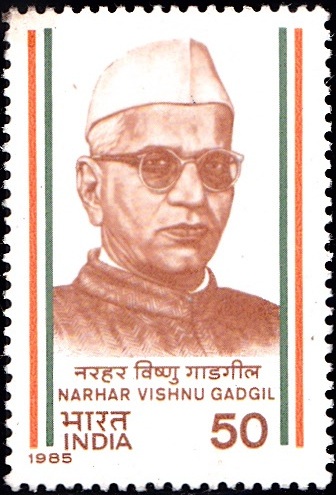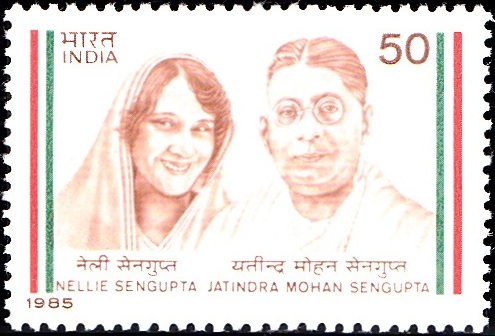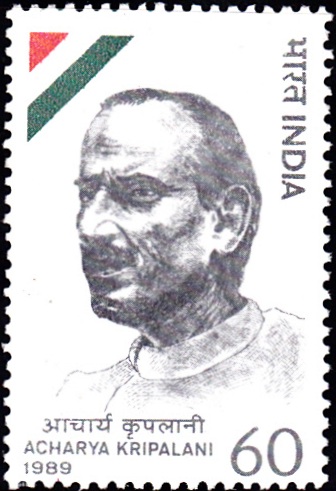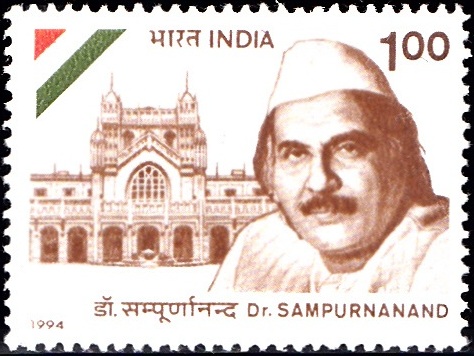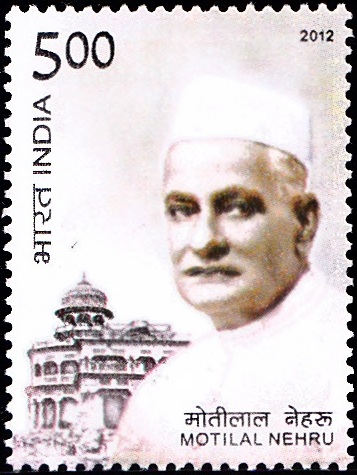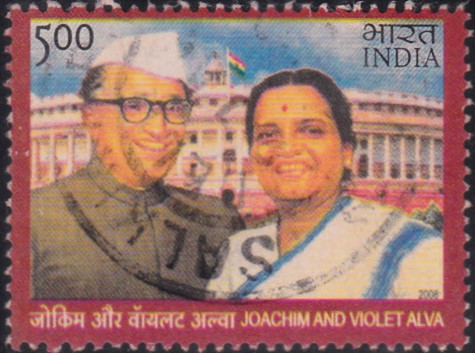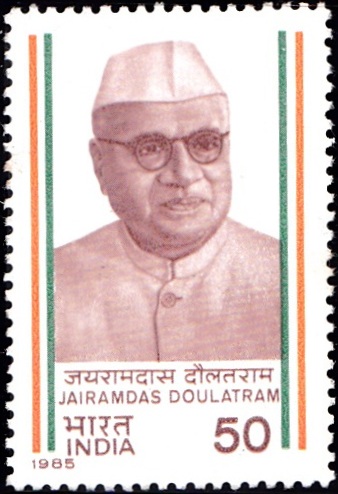
Jairamdas Doulatram
A commemorative postage stamp on the Birth Anniversary of Jairamsingh Daulatram, an Indian freedom fighter and politician from Sindh, then Bombay Presidency :
 Issued by India
Issued by India
Issued on Jul 21, 1985
Issued for : The Department of Posts, India is proud to issue a special postage stamp in honour of this veteran freedom fighter and national leader.
Description of Designs : The 50 P. stamp has been designed by India Security Press, Nashik. The First Day Cover shows Shri Jairamdas Doulatram with Gandhiji and members of the Congress Working Committee. The cancellation has been designed by Nenu Bagga.
Type : Stamp, Mint Condition
Colour : Brown
Denomination : 50 Paise
Overall size : 4.06 x 2.73 cms.
Printing size : 3.71 x 2.38 cms.
Perforation : 13 x 13
Paper : Unwatermarked P. G. matt coated paper
Number printed : 15,00,000
Number per issue sheet : 40
Printing process : Photogravure
Printed at : India Security Press
Name : Jairamdas Daulatram Alimchandani
Born on Jul 21, 1891 at Karachi, Sindh, Bombay Presidency, British India
Died on Mar 1, 1979 at Delhi, India
About :
- Jairamdas Doulatram, one of the tallest, noblest, and highly respected leaders of India, was born in Karachi in a distinguished Sindhi family on July 21, 1891. His academic career was brilliant throughout. After taking his degree in law, he started legal practice, but soon gave it up as it often led to conflict with his conscience.
- In 1915, Jairamdas came into personnel contact with Mahatma Gandhi, who had then returned from South Africa, and became his devoted follower. At the Amritsar Session of the Indian National Congress in 1919, he worded Gandhiji‘s resolution in such a way that it avoided an impending rift between Gandhiji and his other congress colleagues. Since then Gandhiji came to repose great faith in him. Gandhiji spoke of him as “one of the greatest person in India“. He used to compare him with pure gold and say: “I swear by Jairamdas. Truer man I have not had the honour of meeting.“
- Jairamdas enjoyed the trust and affection of Mrs. Sarojini Naidu who described him as a “Lamp in the Desert” because of his services in the Sind, which was mostly a desert. His ties with Sardar Patel and Dr. Rajendra Prasad were also very close.
- Jairamdas actively participated in all the movements of Gandhiji right from the Non-co-operation movement of 1920 to the “Quit India” movement of 1942 and in the process suffered imprisonment several times. He served as a member of the Congress Working Committee from 1928 to 1940 and was twice elected as the General Secretary of the Congress in 1929 and 1934.
- Jairamdas was a veteran journalist, too. For varying periods, he was the editor of The Hindu, The Hindustan Times and of Gandhiji‘s weekly Young India. In 1924, he was appointed as the General Secretary of All-India Hindu-Muslim Unity Conference. In 1926, he was elected to the Bombay Legislative Council, only to renounce it and become the Secretary of the Foreign Cloth Boycott Committee in obedience to the wishes of Gandhiji.
- In the Salt Satyagraha of 1930, Jairamdas sustained a bullet wound in his thigh in police firing at Karachi. Gandhiji sent a congratulatory telegram saying: “Consider Jairamdas most fortunate, Bullet wound in thigh better than prison, Wound heart better still“. And in a speech paying glowing tribute to him, Gandhiji said : The intelligence that he possesses and the prestige he enjoys are as great as his purity.
- After the Individual Satyagraha of 1933 in which he worked as the President of the Indian National Congress, he engaged himself, in the constructive activities of the Congress like harijan and village work. In 1934, he was appointed as the Chairman of the Bombay Textile Wage Committee and also a member of the Central Board of the Village Industries Association.
- Jairamdas became a member of the Constituent Assembly of India in 1946 and, on August 15, 1947, with India’s Independence he was appointed the Governor of Bihar. In 1948, he became the Union Minister for Food and Agriculture, and from 1950 to 1955 he functioned as the Governor of Assam. For some time in 1957, he was the Chief Editor of the Collected Works of Mahatma Gandhi, he was nominated to the Rajya Sabha and continued to be its member till 1976. It was due to his indefatigable efforts that the Sindhi language was recognised by the Govt. of India as one of the National Languages.
- Jairamdas was a man of vision and rare personal charm. He exuded nobility and purity of mind in every walk of life. He breathed his last on March 1st, 1979 in Delhi.
- (Text courtesy : Anand. T. Hingorani).


